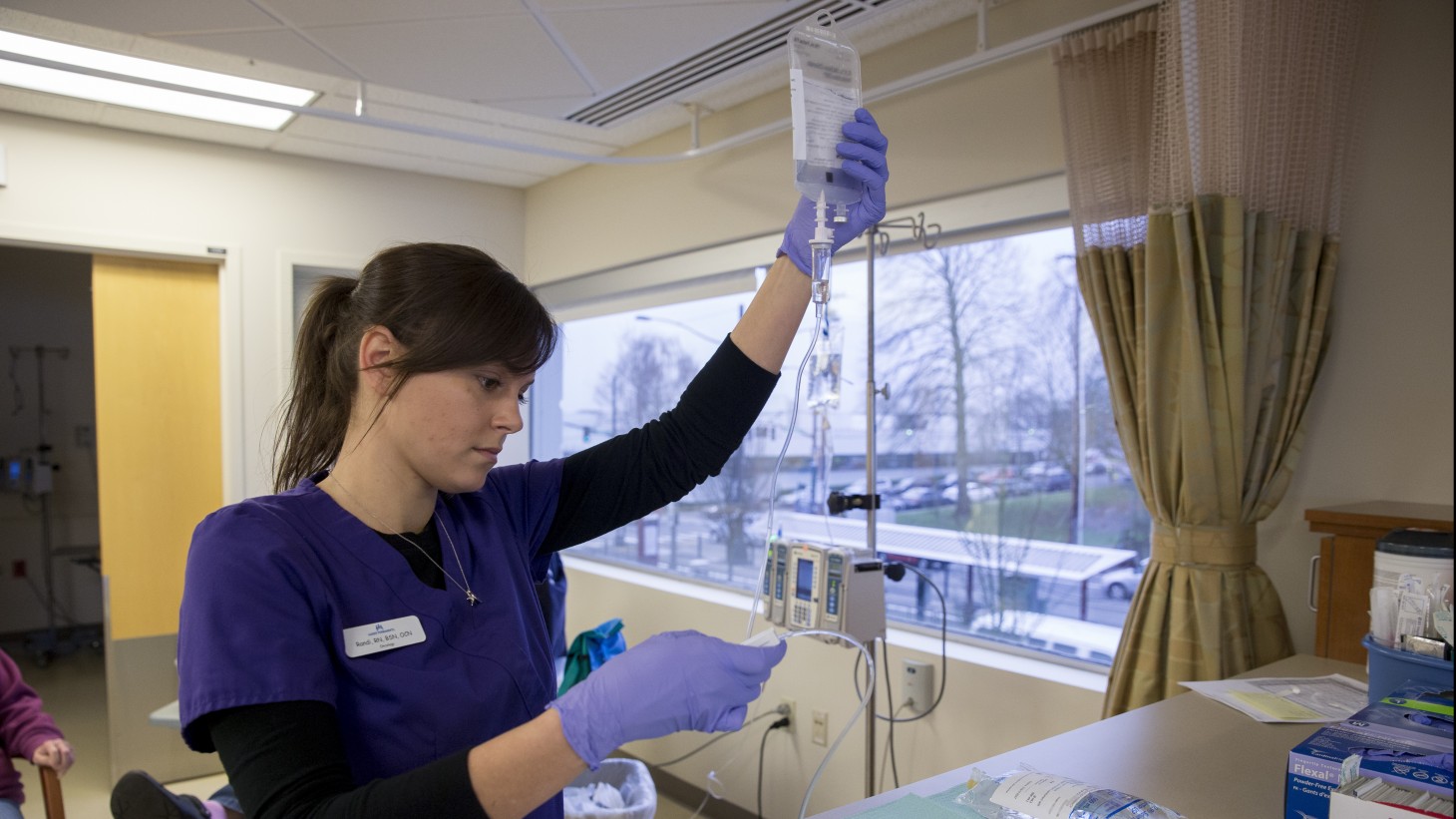Provide Good Care, Save With Secondary Tubing
Change in Tubing Saves $25,000

Savings added up quickly when this Oncology team in the Northwest paid close attention to which tubing it used for IVs; shown is Randi Norton, an RN and member of OFNHP.
Oncology UBT cuts costs with different IV set-up
It started with a question from Oncology RN Tom Fought, a member of the Oregon Federation of Nurses and Health Professionals (OFNHP), at the Interstate Medical Office in the Northwest.
Why, he wondered, was primary tubing used for low-reaction drugs instead of the less-expensive short or secondary tubing?
That prompted the department’s unit-based team to start an improvement project that wound up saving $25,000 a year.
When patients come in for chemotherapy or other infusion medications, the drugs are administered via an IV: The bag holding the medication is hung on a pole, with a line that goes into the patient’s vein. When primary tubing is used, the valve to stop the flow of medication is very close to the patient’s body.
If the drugs being used have a high potential for an adverse reaction, it’s essential to use primary tubing, so that if there is an emergency and the line has to be shut, only a very little additional medication reaches the patient.
Appropriate times for less expensive options
When the short tubing or secondary tubing is used, the valve to stop the flow of medication is farther from the patient. In this situation, if the valve is closed, more medication is in the line and will flow into the patient until the tube is empty. These types of tubing are appropriate when the medication has a low potential for a negative reaction.
Primary tubing is $4.10 per unit, short tubing is $3.65 and secondary tubing is 65 cents. The costs add up if primary tubing is used when it’s not necessary.
“I had no idea that we would be saving the unit that much money by conforming the tubing,” Fought says.
This team alone was able to save $25,000 a year. If every Kaiser Permanente oncology infusion department adopted this practice, the savings would be dramatic.
“This was such an easy tweak—we just needed to think outside of the box,” says Lacey Anderson, RN, the Infusion Team Lead and a member of OFNHP, who was involved in the project. “The team realized this was such a great idea and wondered, ‘Why haven’t we been doing this all along?’”
Greater camaraderie
Heidi Rolf, the department manager and the UBT’s management co-lead, is proud of the work the team has accomplished. She attributes the success to the leadership of the team and notes that since the team has advanced to a Level 4 on the Path to Performance, team members have more camaraderie and are more engaged.
“At first it was a little difficult to change the habits of the nursing staff,” Fought says. “Within a few weeks, we had everyone on board and our tubing project took off.”
